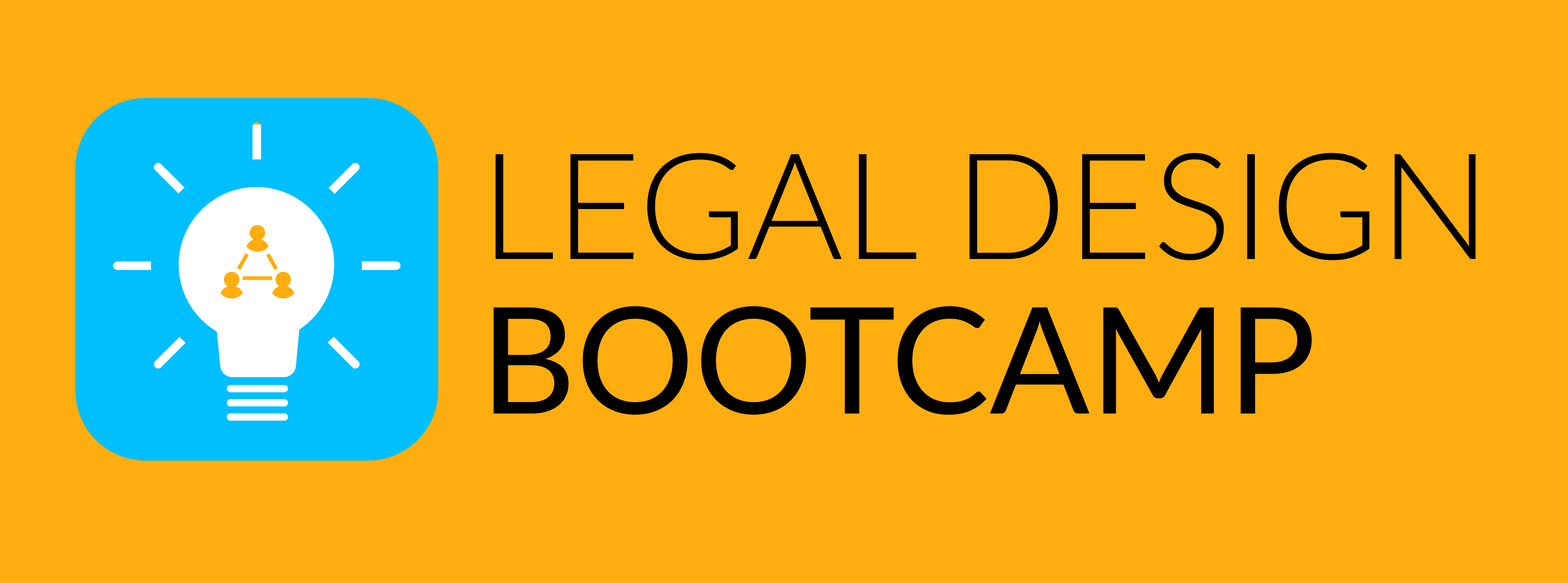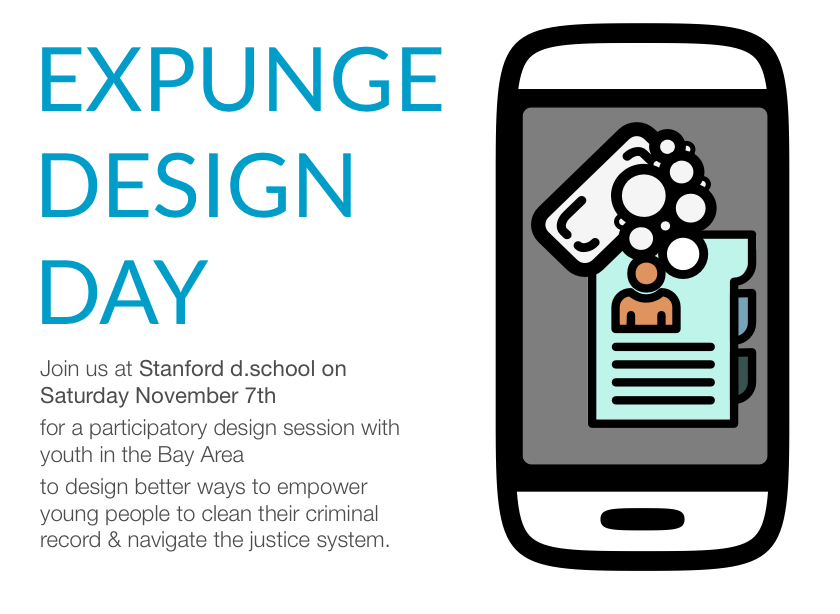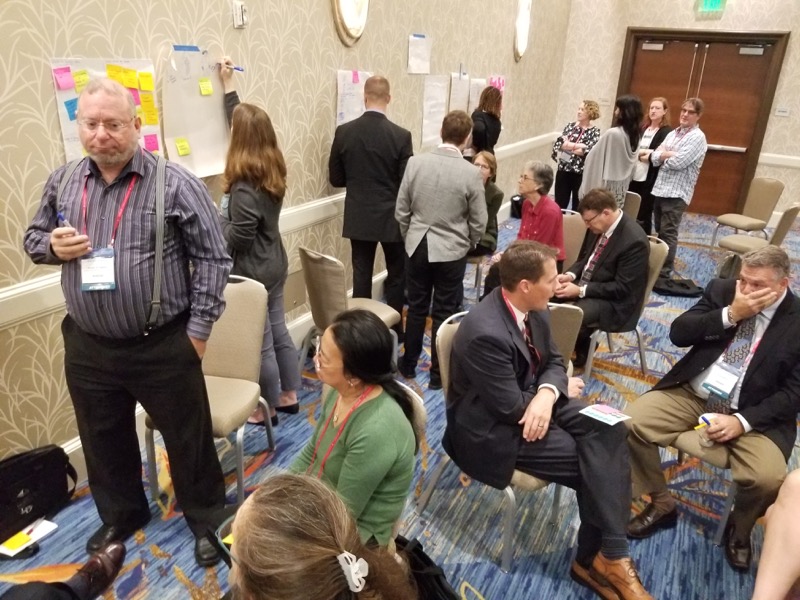Last week, we at the Legal Design Initiative launched our first Legal Design Bootcamp. It was an experiment for us, to test out if this format is worthwhile for legal professionals to move forward from challenges they know they have, to promising concepts for solutions, and to prototype and testing plans to actually implement.
We ran the Bootcamp as a day and a half session, with the first half day as a quick & deep cycle through a design process — from a broad challenge statement to a tested prototype) — and reflection on how this process works, what makes it different from our status quo way of solving problems, and and how it might be applicable to the challenge the participants brought. Then on the second day, we went through a second design cycle, this time around the specific, legal challenges that our participants brought.
We had a wonderful group of participants, from law firms to courts to legal aid groups to law professors to foundations. They each brought quite wicked challenges with them to solve — everything from how to help litigants prep and navigate courts, to how we can help innovative change spread through legal organizations.
The initial feedback is positive about the value of design thinking & this type of in-person, hands-on workshop of problems. During the debrief, I took notes about what some possible improvements might be. They include the following:
- Have more non-lawyers involved
- Give prep materials beforehand, so the first day of the materials is less overwhelming
- Have required user interviews or prep work, that they have to talk to people & collect materials
- Bring numbers or fellow professional that they can test with during that day
- Give follow-up check-in, to hear who it’s going, and hold people accountable
In the past day, I’ve also had a few other high-level takeaways about what the value Legal Design bootcamps & workshop sessions can have for people inside firms, courts, non-profits, and schools who are working for change. Here are my initial thoughts:
- Using design process to avoid bad/unnecessary designs. A good outcome can be realizing that you don’t need to build an app. Perhaps there is a way to set up a new protocol or build off a current tech platform to solve this solution — without having to design and develop an entirely new thing.
- Bringing more non-lawyers into our mix. We need to find ways to design workshops for legal service providers that have more non-lawyers in the group. This could mean having other analogous professionals involved — inviting in people from the worlds of medicine, finance, insurance, education, and beyond. It can also mean bringing people who aren’t in service industries at all but who are in the business of helping ideas get to successful implementations — like designers, technologists, and venture capitalists.
- Building networks along with concepts. Along with what we’re designing, it’s also about building a network and developing vehicles and support for new projects. We had some teams from a single organization, and others with a mix of organizations represented. One of the most successful teams had one judge, a court official, a foundation official, and a lawyer who had also worked for a foundation. This group not only came up with a promising idea to serve immigrant kids, they also started developing ways that this and other projects could be incubated and sustained.
And here are some photographs!


















